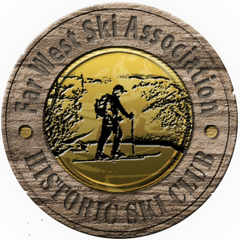by Kathy Fang
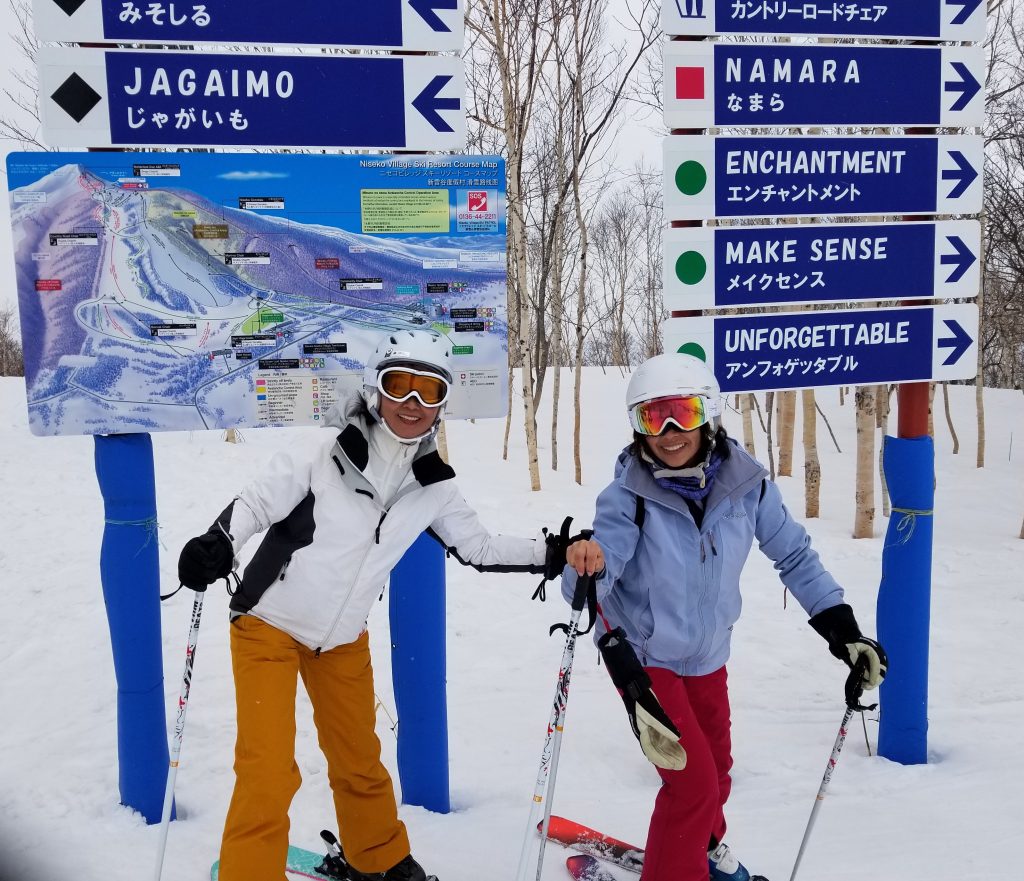
I don’t regret being tempted by Sandy Kiyomura last June to go on a ski trip to Japan organized by the Far West Ski Association (FWSA) in March 2019. Recently I vowed to explore the slopes beyond the Tahoe resorts I have enjoyed for my 17 years of skiing. With Sandy’s urging, I decided to get started by going to Japan!
Sandy and I opted to go for two of the three weeks being offered on this trip, spending our first week at the Niseko resorts in Hokkaido with about 40 other skiers, and the second at the Hakuba Valley resort in Nagano with 70 travelers. With such large groups, there was a bit of waiting around, but thanks to the careful planning by Debbie Stewart and Wanda Ross of FWSA, the travel arrangements went quite smoothly.
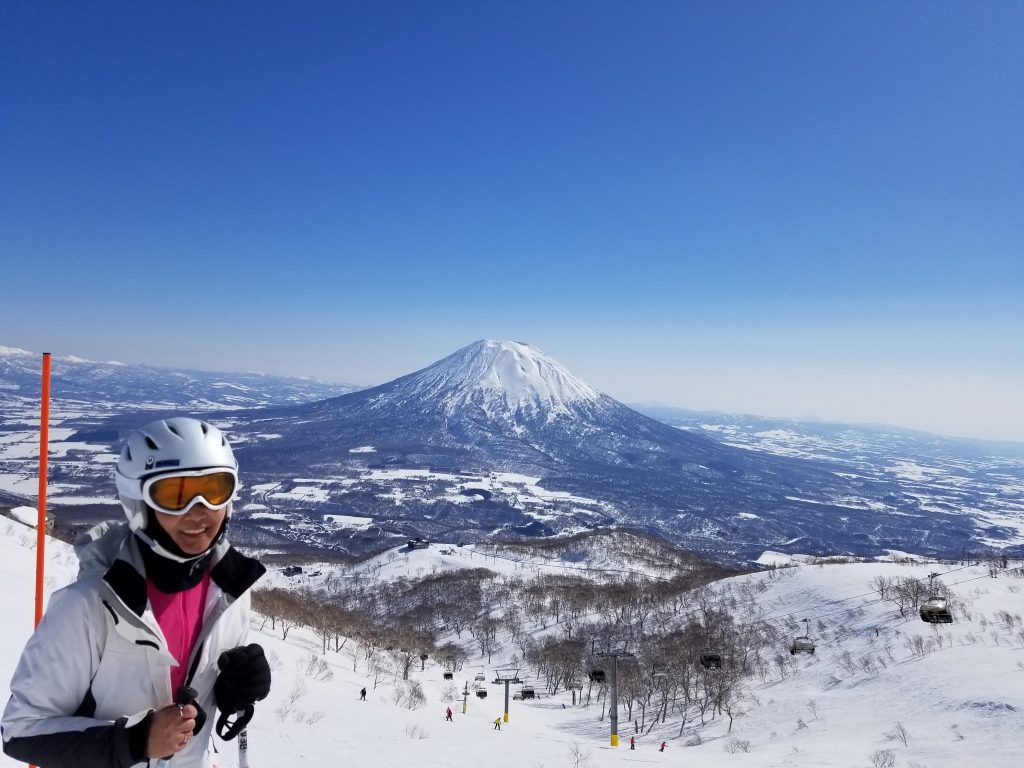
Niseko is a town on Japan’s northern Hokkaido Island, near the dormant volcano of Mt. Yotei. Niseko Ski Resort is comprised of four interlinked ski resorts—Grand Hirafu, Hanazono, Niseko Village and An’nupri. They were part of the Winter Olympics in 1972. We found people from Australia and Europe flocking there. The views from each of the four peaks were amazing!

Hakuba Valley Ski Resort, the host of 1998 Winter Olympics, is the largest ski resort in Japan. It consists of ten resorts in Nagono Prefecture. For this second week, we stayed in the classic Hotel Tokyu, with large rooms, beautiful mountain views, a convenient location, and delicious French inspired cuisine.
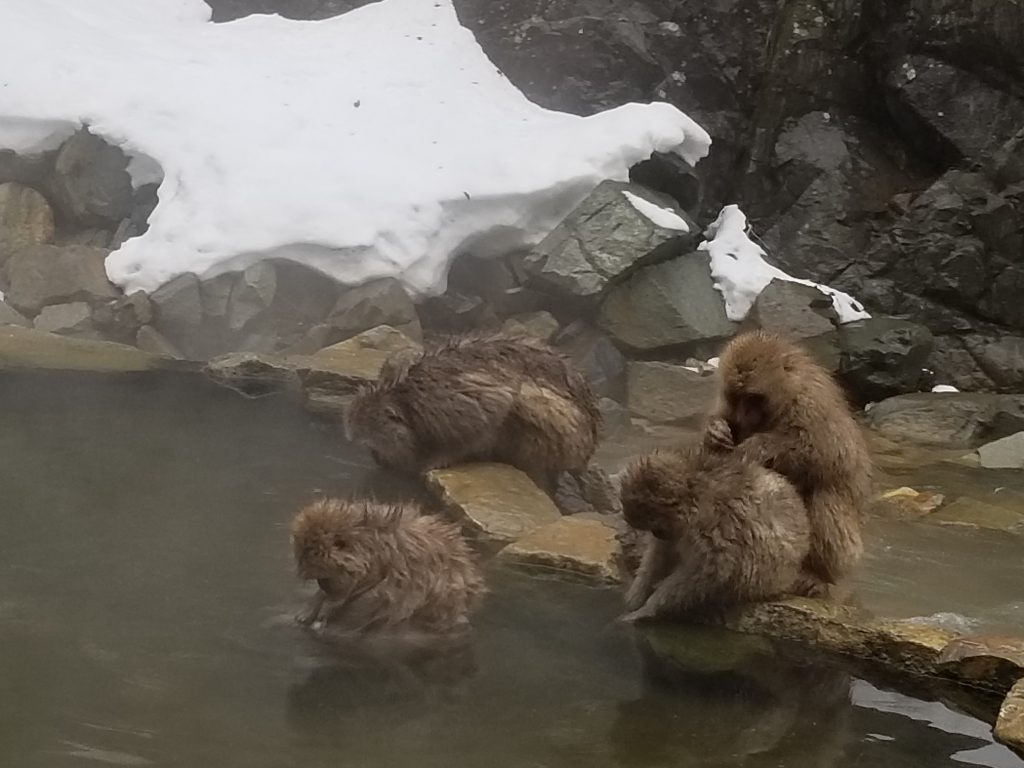
Near Hakuba Valley, we went to visit a Snow Monkey (Japanese macaque) Preserve in Nagano. Snow monkeys are the most northern living nonhuman primates. Legend says that many years ago, snow monkeys discovered that soaking in the hot springs was quite enjoyable, especially in winter. To prevent them from coming to the human hot springs, the locals built special hot spring spas for snow monkeys and then lured them there with food. Thus, these monkeys would happily stay in the reservation areas and enjoy their own spas. The snow monkeys, minding their own spa experiences, paid little attention to us.
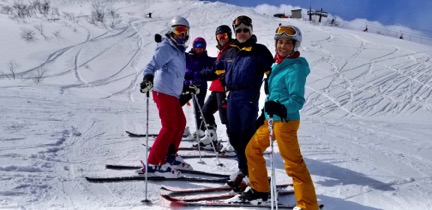
It is said that Japan has the best powder in the world. When we arrived in Niseko and Hakuba in early March of this year, the weather and snow conditions were very much like those in Squaw this year—a lot of snow but warm, moist, and icy sometimes—“spring ski” conditions. Sandy and I met and skied with people from Nisei and other clubs from many spots all over California and other western states. The sportsmanship and camaraderie on the slopes with other members in the group made this ski trip fun and memorable.
Like many of you, learning the history, meeting the locals, experiencing their day-to-day life and culture are important parts of our travels. Since the economic downturn in the 1990’s, Japan has had a hard time recovering. Due to the national low birth rate, we observed many men and women well beyond middle age working in the service industries. As a recovery method, Japan has focused on increasing tourism, which has doubled in the last five years.
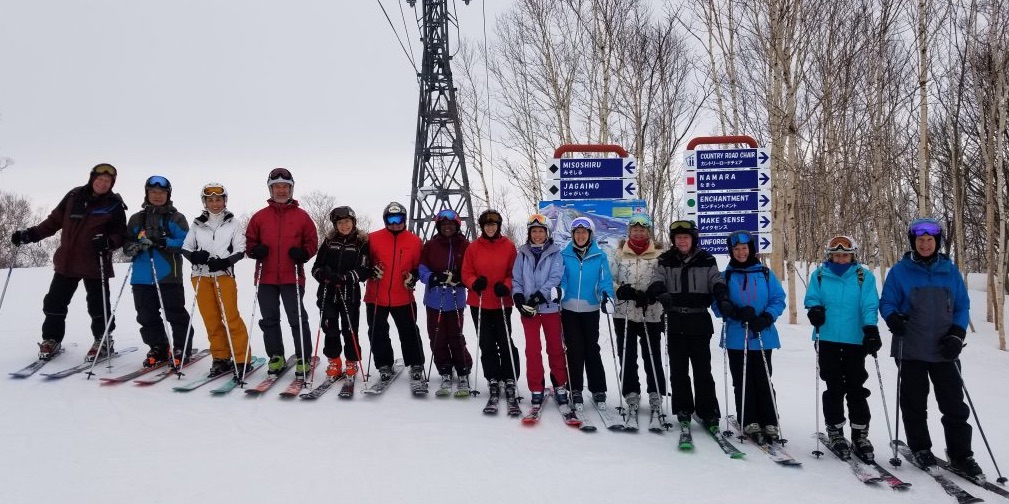
Travel in Japan nowadays is relatively easy and comfortable. Everywhere we went, things were neat, clean, nice and orderly. Trains and buses are always on time. Food is healthy and delicious. Plates are presented like flower arrangements. Japanese people are courteous and helpful. Surprisingly, travel in Japan is so much less costly than my first visit there fifteen years ago!
Overall, I had a wonderful time during my first ski trip to Japan with FWSA. Next year, FWSA goes to Davos, Switzerland and Portugal! Maybe you’ll be there?
